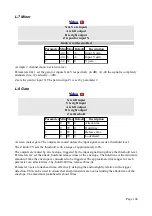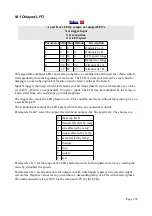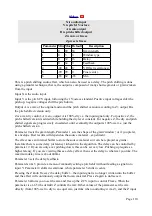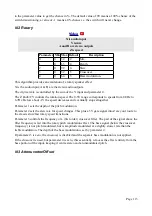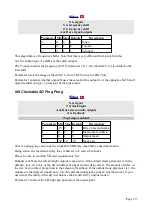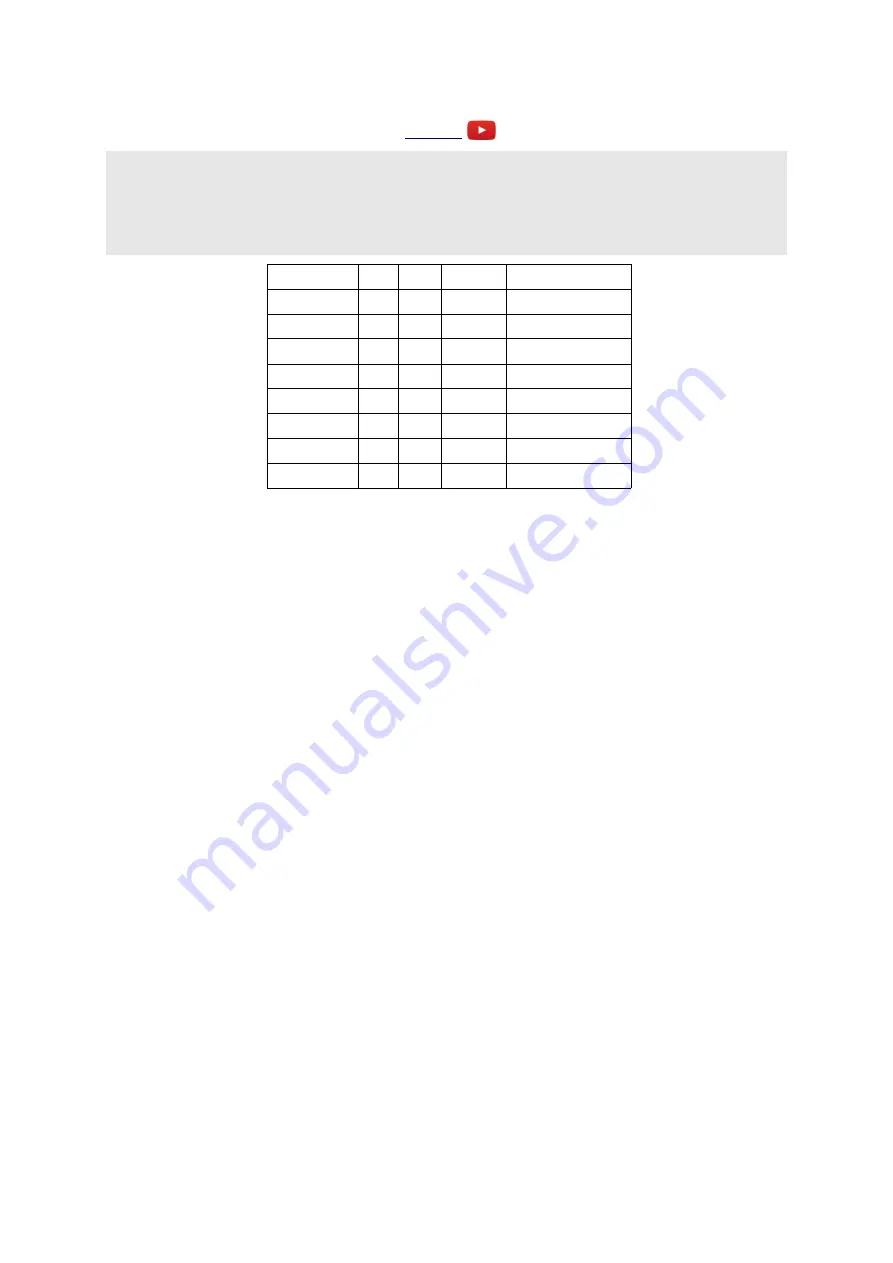
L-5 Stereo Chorus
X is audio input
Y is LFO rate
A is left output
B is right output
Z is wet/dry
Parameter Min Max Default
Description
0
0
99
8
LFO depth.
1
-64 32
0
Y offset.
2
-63 63
0
Feedback.
3
-1
31
-1
Lowpass filter.
4
1
64
16
Delay time.
5
-32 32
0
Fine delay time.
6
1
6
6
Stages.
7
0
1
0
Saturation.
A stereo chorus/flange effect.
X is the audio input.
A and B are the stereo audio outputs. These are a mix of the input and the chorus output.
Z is a wet/dry control. At zero, the outputs are 100% dry i.e. the input signal with no chorus added.
For positive Z, chorus is added while holding the dry level constant. For negative Z, the dry and
chorus signals are progressively crossfaded, until eventually the outputs are 100% wet i.e. just the
chorus signals.
The chorus effect is generated via a number of LFOs. The LFO depth is set with parameter 0. The
LFO speeds are set with a combination of parameter 1 and input Y, which is a 1V/octave input
centred on 4Hz for 0V.
Parameter 2 controls a feedback loop around the effect. Parameter 7 engages a saturation stage in
the feedback loop, which can prevent clipping, while adding some colouration to the sound.
Parameter 3 applies a low pass filter to the chorus input. It does not affect the dry portion of the
signals.
Parameters 4 & 5 together set the delay time, with a range of approximately 200ms. Very small
values give flanging; medium values (25-50ms) are more typical for chorus. Larger values give
recognisable echoes.
Parameter 6 sets the number of stages i.e. the number of simultaneous delayed/modulated signals
that combine to produce the effect. Higher values will give a smoother, lusher chorus; small values
are more appropriate to give a sharper, more defined modulation, especially for flanging.
Page 102

















